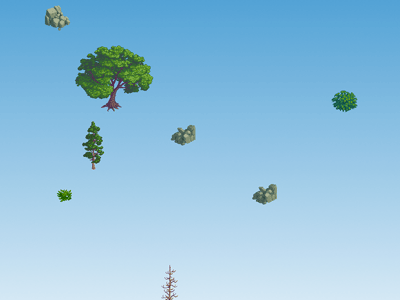Archive for the ‘net_art’ Category
Ivan Puig at MagnanMetz
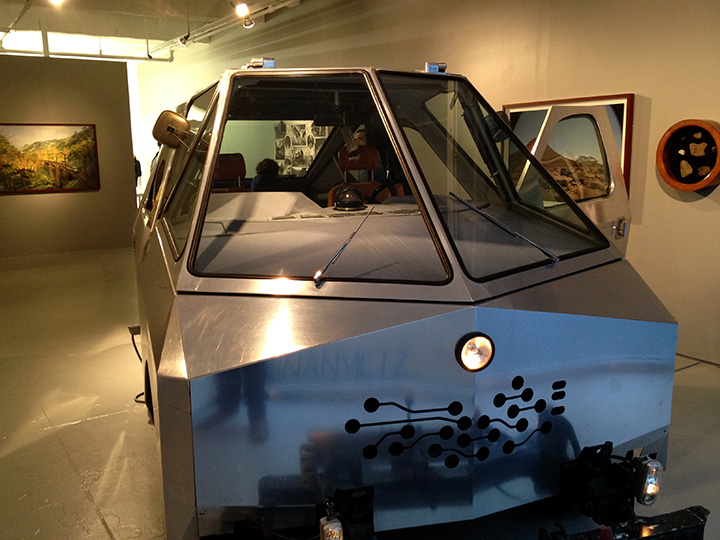
Ivan Puig’s SEFT-1 probe at MagnanMetz Gallery, Chelsea, NYC through March 9, 2013
Following the opening of Mexican artist Ivan Puig’s solo show at MagnanMetz gallery in New York City, Iggy and I visited with Puig and caught up regarding the SEFT-1 project (SEFT is an acronym for Sonda de Exploración Ferroviaria Tripulada or Manned Railway Exploration Probe). I first learned about the project in 2006 when Puig was just getting started on the concept of exploring abandoned railroads through out Mexico using a vehicle designed to travel the on the railroad tracks as well as car roads when necessary. Ivan was interested in seeing first hand what had happened to the communities that were built along the tracks and largely subsisted from the trains running throughout Mexico. Many of these communities are small rural populations that depended on the trains for various needs.
Puig spend a year traversing the abandoned railroad system with his half-brother Andrés Padilla Domene. As described on the exhibitions press release “The two set off from the National Museum of Art in Mexico City to begin their investigation of abandoned railways throughout Mexico and Ecuador, collecting evidence of their travels through photo, video and audio. Puig and Padilla Domene recorded contemporary landscapes, infrastructure and details of the everyday life of inhabitants to create a futuristic exploration of the countries’ pasts. Their progress has been consistently updated on the project’s website, www.seft1.com, where the public can follow the trajectory of the vehicle, view images of artifacts collected and listen to interviews with those they have met along the way.”
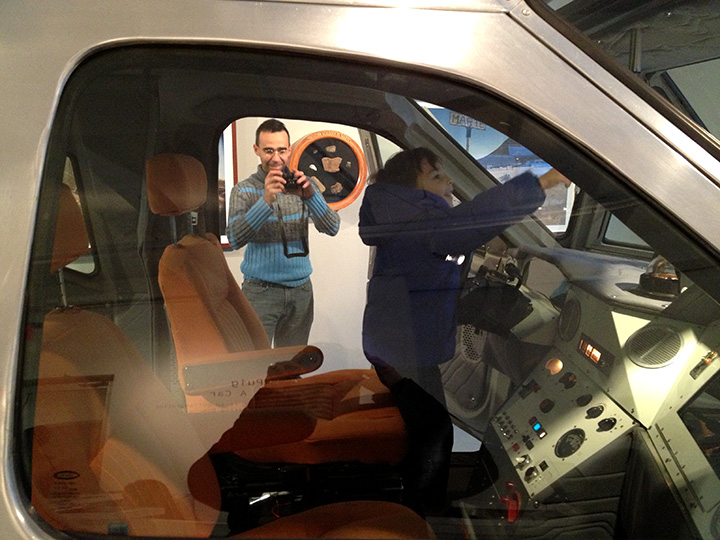
Ivan taking a picture of Iggy inside SEFT-1, a special treat as he was allowed into the sculpture
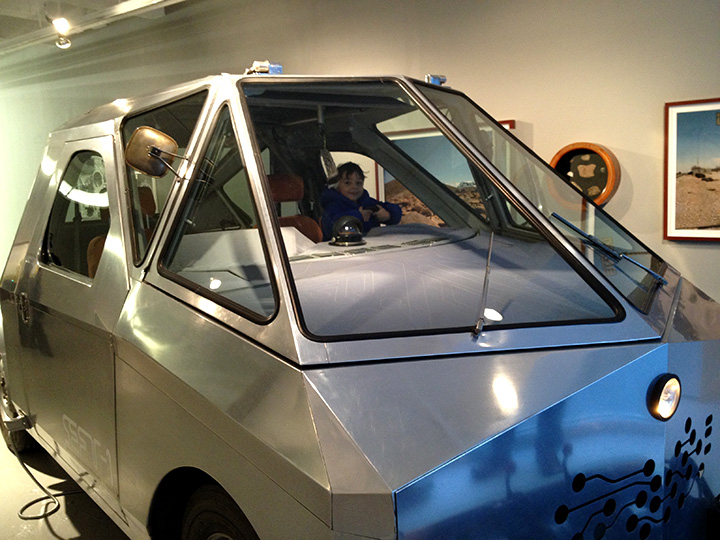
Iggy inside SEFT-1
It appears that the SEFT-1 will be traveling to the UK to explore abandoned railways throughout the British countryside sometime in the next year. By doing so, the artist will expand the archive of stories regarding locomotive technology and the communities surrounding the technology.
Fun with Pixels
Public Broadcast Cart in fall 2011 Art Journal
Sarah Kanouse has published an excellent essay on radio as art practice in the public space. The essay “Take It to the Air: Radio as Public Art” is printed in the fall 2011 Art Journal and discusses three different art projects utilizing radio as the primary medium. Following the introduction, Sarah discusses the work of Jon Brumit and Neighborhood Public Radio, my own Public Broadcast Cart and the work of art collective LIGNA. The final wrap up of the essay is quite inspiring:
In these projects, radio is a prosthetic technology that transmits the physical world into the space of electronic communications and materializes the vast space of electromagnetic resources into something material and physically apprehensible. In so doing, it forces a confrontation with and contestation of the rules that govern and control the use of both spaces, positioning radio for creative interventions in manifold public spaces – not only those we inhabit with our bodies, as much of the best public art does, but also those we inhabit with our passions, our excesses, our energies, and our speech.
Laurina Paperina’s “HOW TO KILL THE ARTISTS”
Just came across these art-specific animations. Whether they are coming out of annoyance, jealousy, desire for recognition and fame, creative drive, or all things combined, they’re entertaining for anyone with an Art History and Contemporary Art background.
HOW TO KILL THE ARTISTS ep.5 from Laurina Paperina on Vimeo.
Virtual Love, Feelings About the Web Lately
I had to take a bit of time out to create a small animation describing how I feel about online advertising and Capitalism’s consumption of the web…
If you’d like view it as a SWF (much larger, sharper and quicker download), CLICK HERE
“The Un-accounted Body in Performance” by Laura V. Sandez
Scholar and writer recently published an essay titled “The Un-accounted Body in Performance: Who is the Subject of the Rights of the Illegal Alien?” in the current publication of the academic journal LLJournal in which she discusses the art projects VOTEMOS.US and Design for the Alien Within.
Following brief abstracts of the two projets, Sandez opens the essay with the following paragraph:
Both Votemos.us and Design for the Alien Within imagine treating the illegal alien as if he/she matters; Votemos.us considers their political substance through hypothetical voting rights, and Design for the Alien Within considers their safety. It is not my intent to provide an in-depth analysis of either Votemus.us or Design for the Alien Within, but to trace the specific phenomenon of the unaccounted body as it is articulated in each project2. These artistic interventions, which have the unaccounted body as their subject/theme, present a space that has yet to reach their subject—whether as audience or as a catalyst for a better life making their situation better—and the hypothetical situations they evoke. Giving voting rights to undocumented people could not occur when their civic being has not yet been accounted for, and designing furniture for the hiding of bodies cannot be functional if people do not feel a real need to hide undocumented immigrants.
Read the entire essay on the current volume of the LLJournal, Vol5, No 2
Ben Rubin at Bryce Wolkowitz Gallery
The Ben Rubin show at Bryce Wolkowitz titled Vextors is definitely worth the visit. Although the work is a bit slick for my taste and some of the most interesting aspects about the work get lost in the presentation, it’s an attractive show. Also Rubin’s form of data visualization is much more exciting and creative than most of the data viz we see… black screens with floating vectors.
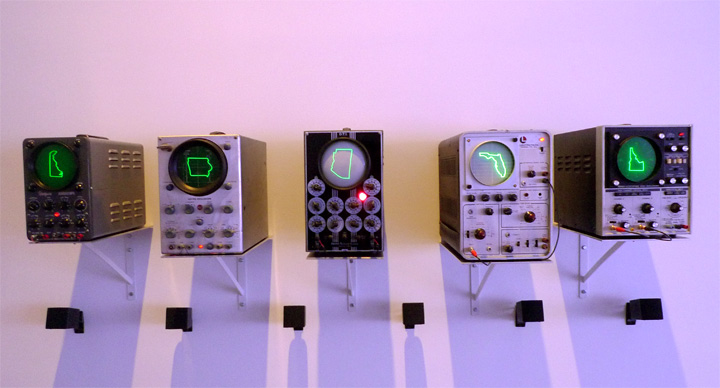
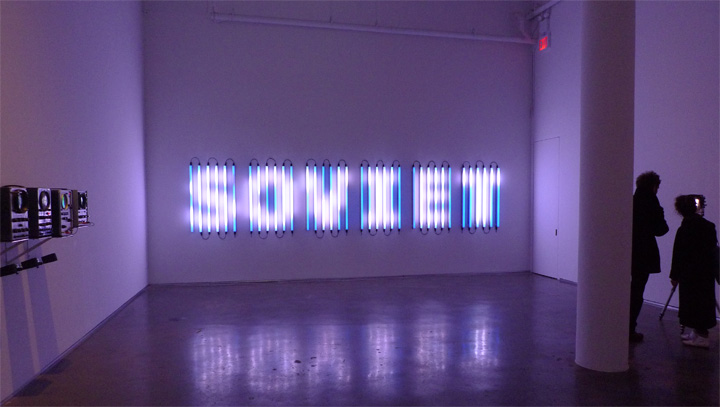
The show features new work, “including The Language of Diplomacy (2010-2011), a 24-foot text wall that mines the newest WikiLeaks collection fo diplomatic cables.
Stories in Reserve, Volume I now available
The Temporary Travel Office has published a set of artist audio works as audio tours of sites in North America. Last winter, Ryan Griffis contacted me to contribute to the publication by revisiting Dentimundo, a 2005 project commissioned for inSite05 that investigates medical tourism in the form of US citizens traveling to Mexican dentists along the border for dental care that is unaffordable in the United States. For the project, I traveled the length of the U.S./Mexico border and met with dentists and patients to learn about this detail of the border economy and relations.
For the publication “Stories in Reserve,” I revisited all of my old files, photographs, interviews, research and writing to compose a narrated audio work. I recently received the publication that also includes America Ponds by Sarah Kanouse and Siting Expositions:Vancouver by Ryan Griffis, Lize Mogel and Sarah Ross. The publication includes a full color booklet with statements by the artists and translations of the works as necessary along with three CDs for each of the pieces. It’s a great little publication and worth checking out online for free – Volume One.
What is the Miracle of Chile?
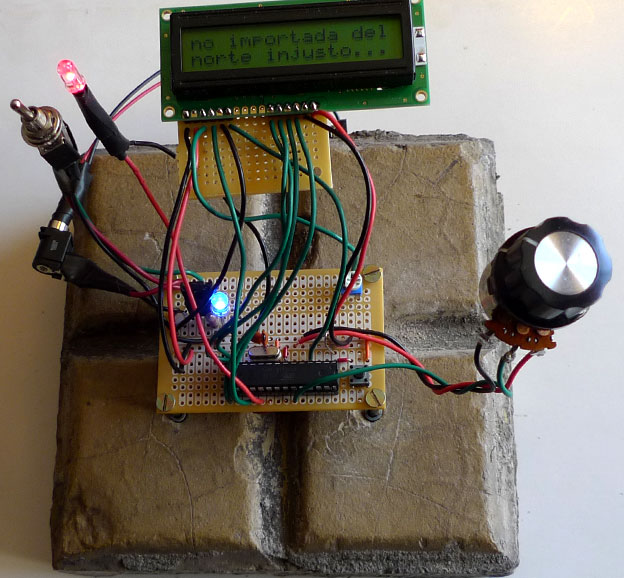
Last November I received an invitation from Ignacio Nieto to participate in an exhibition titled “portables” at the Museum of Fine Arts of Santiago. Last Friday I returned from Santiago, following two weeks of production.
Early this year, I contacted my old friend Kurt Olmstead to work with me on a project that I knew would be beyond the scope of anything that I could do alone within a period of several months. Kurt was on board and we started discussing the premise of the project – Chile as the laboratory for neoliberal economic philosophy of the Milton Friedman flavor. Kurt and I grew up in the midst of Reaganomics. In the 80s, Reagan and Thatcher embraced Friedman’s neoliberalism and Chile was framed as the example of what privatization, deregulation of the markets and cuts to social spending will do to control inflation and allow a nation’s economy to prosper. In 1981, Friedman declared the phrase “Miracle of Chile” to reflect the transformation of Chile’s economy through his neoliberal philosophy as implemented by the Chicago Boys, Chilean economists who studied under Friedman.
It is now 2010, we live in the midst of a global economic crisis and are now questioning the neoliberal economic formula. The art project consists of a workshop, public discussion, bus intervention and a virtual labyrinth. Each element asks participants in Chile to identify the Miracle of Chile in the scope of their city and personal lives. A documentation site is available at www.miracleofchile.com

Two workshops were held as part of the project, one with middle school kids and a second at Matucana100 Cultural Center asked participants to document the Miracle of Chile in their public space.

Street situations, an interactive sidewalk tile invites pedestrians to ask one another “What is the Miracle of Chile?”

As an example of privatization of public space, a small bus intervention was executed on bus rider handles sold for advertisement.
